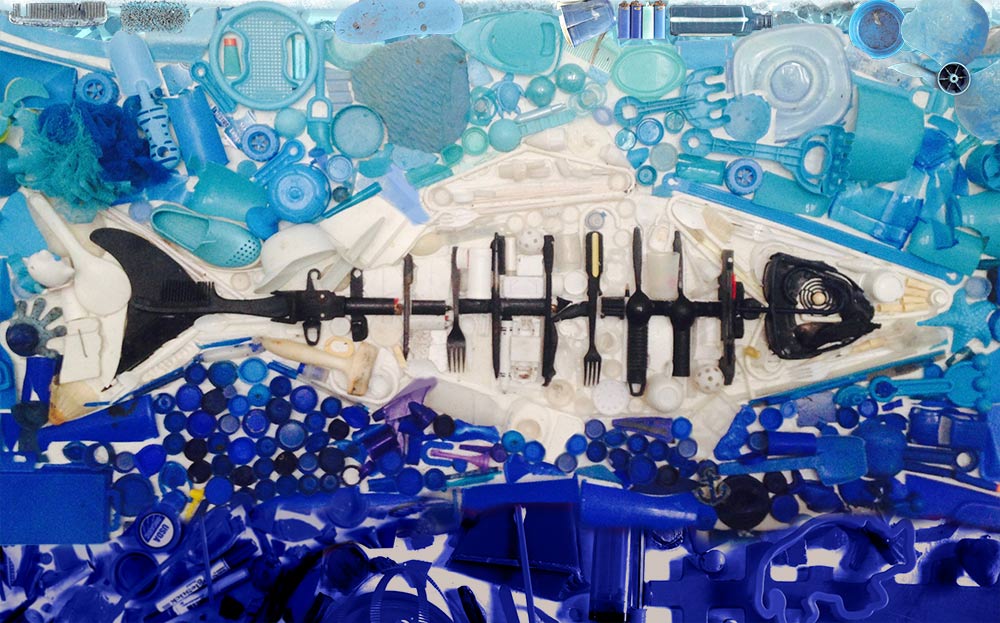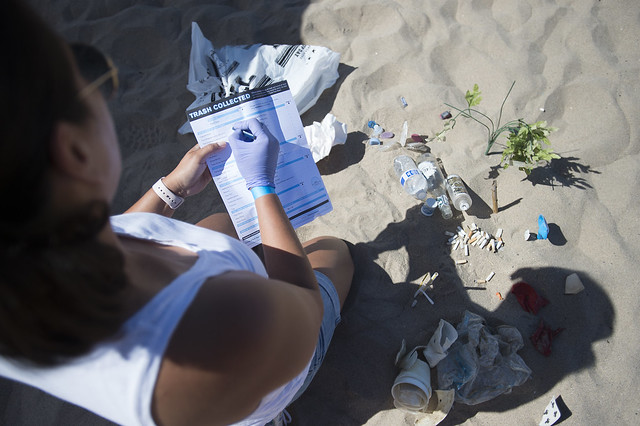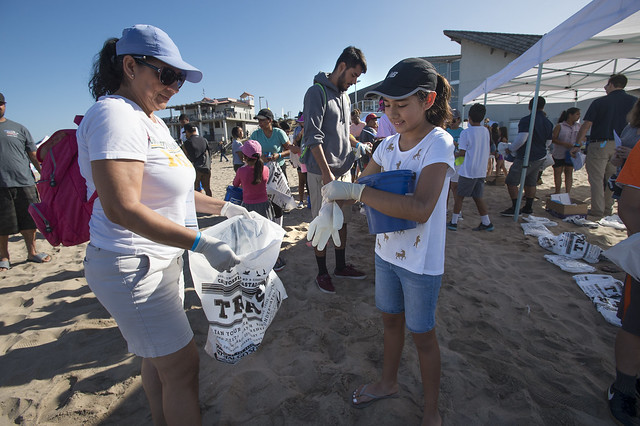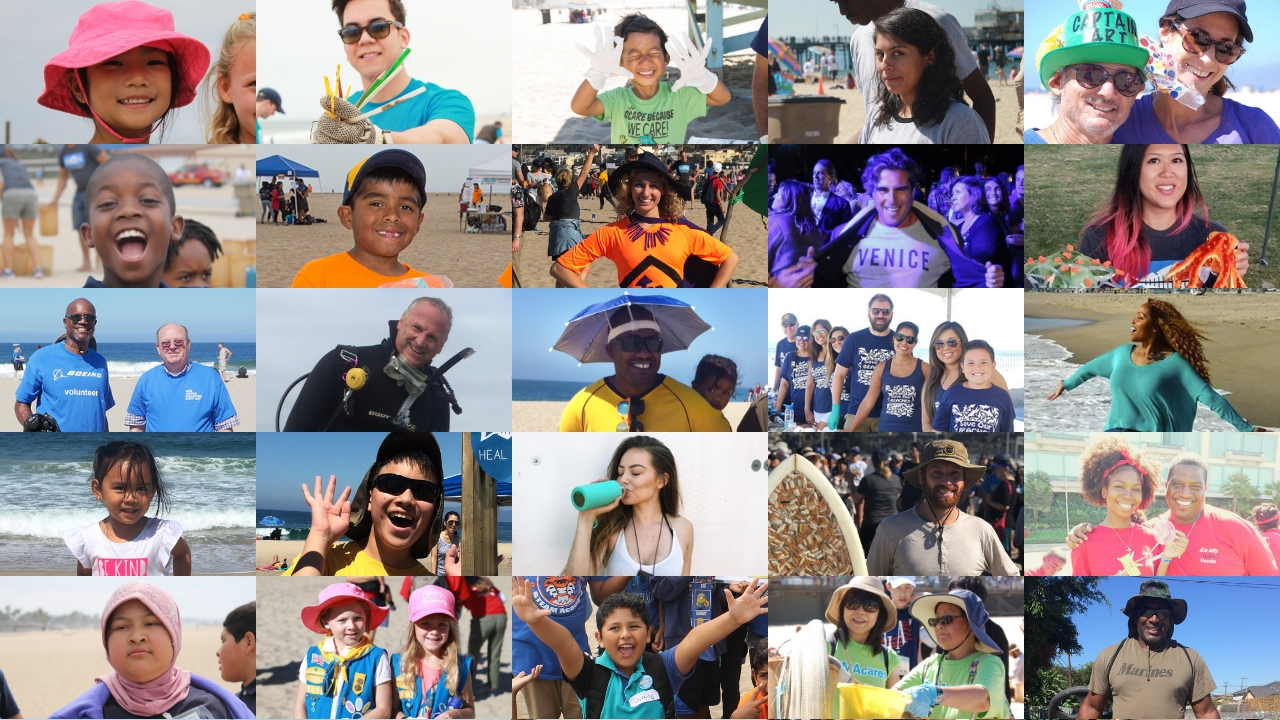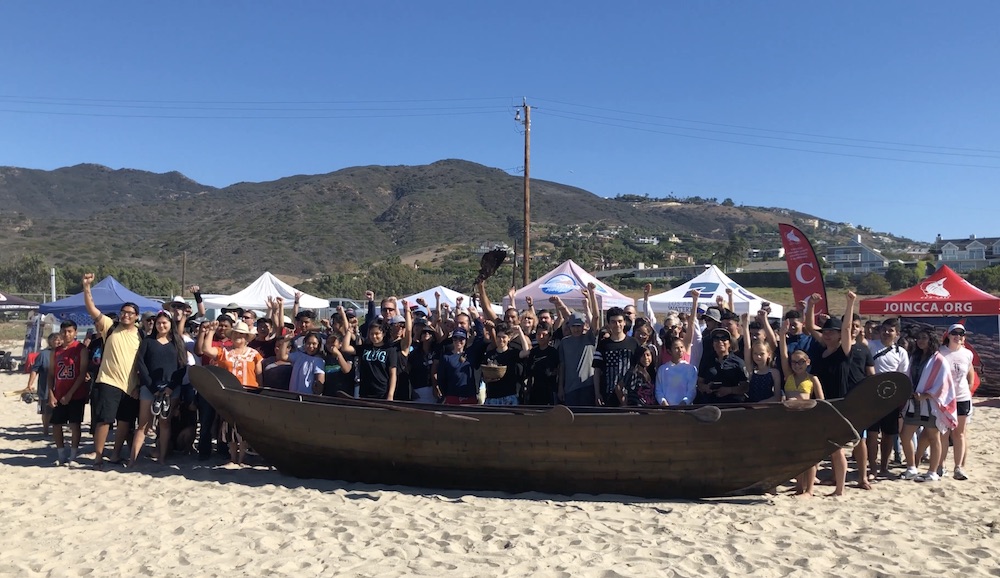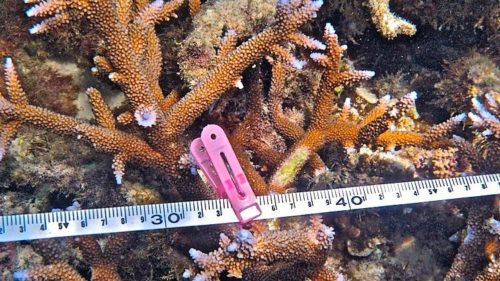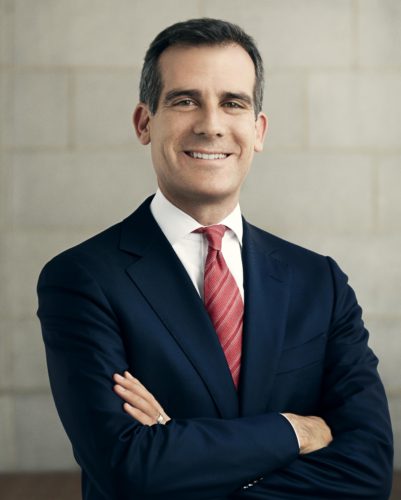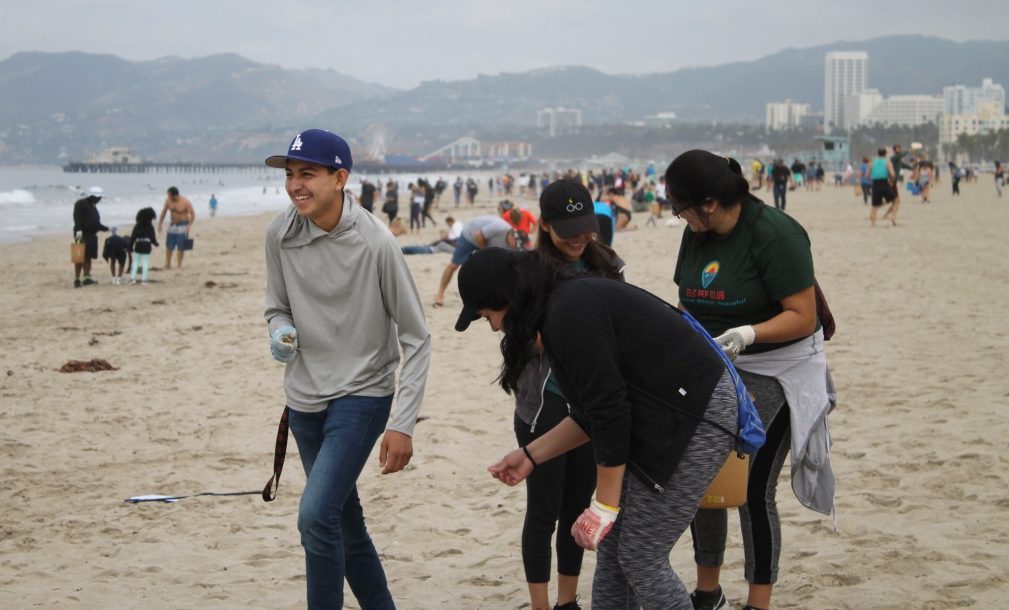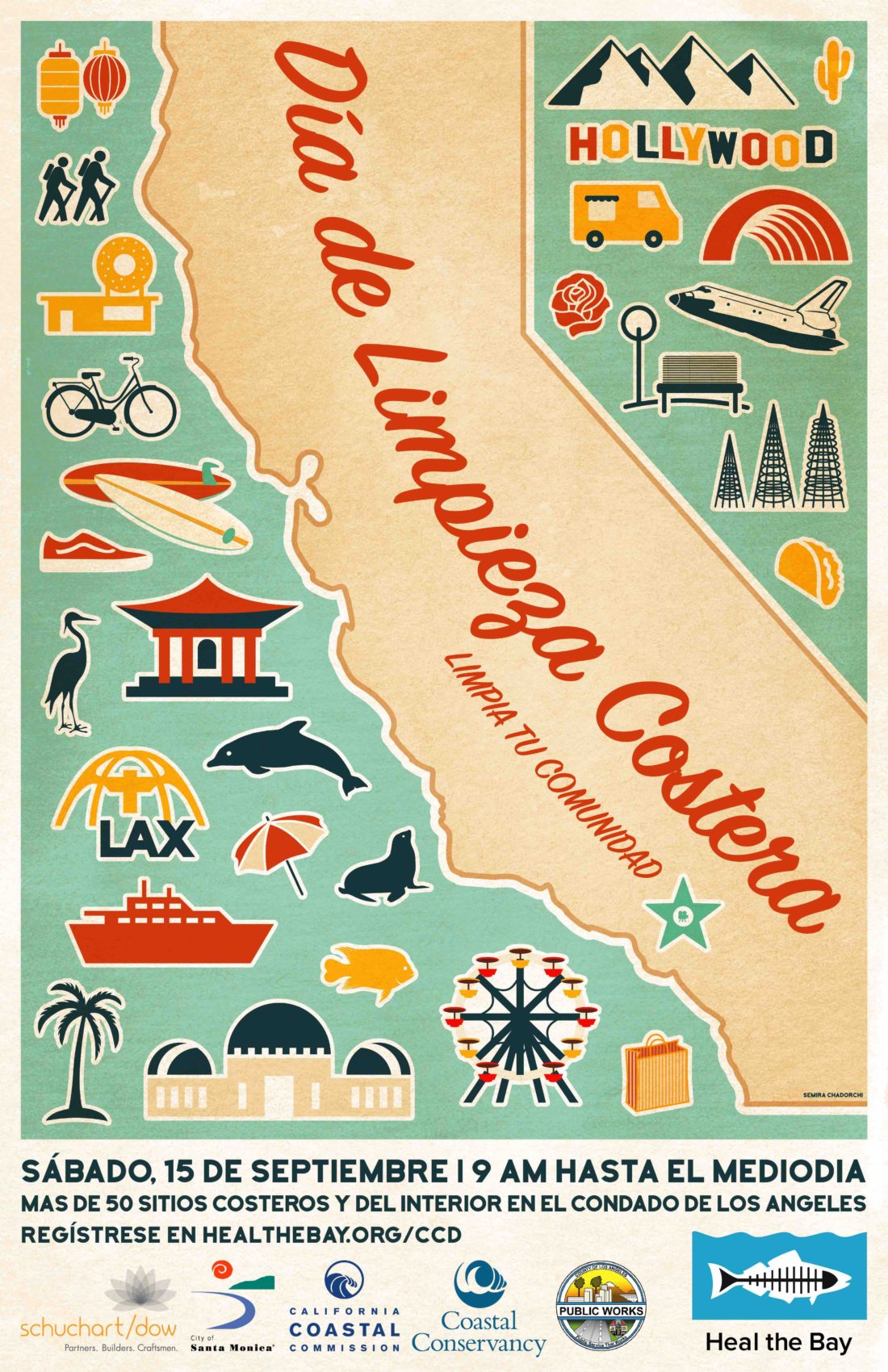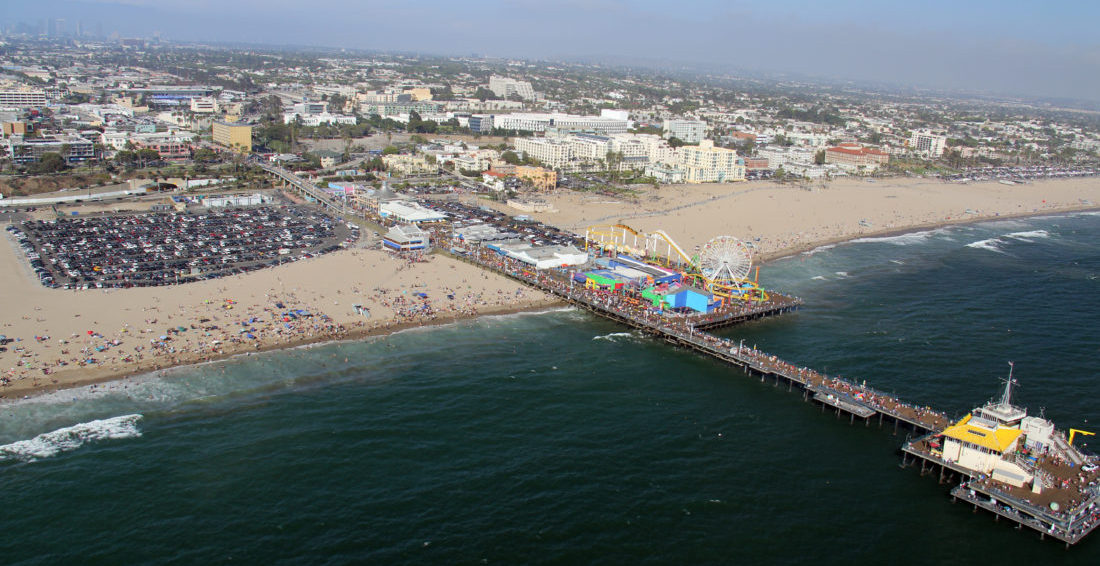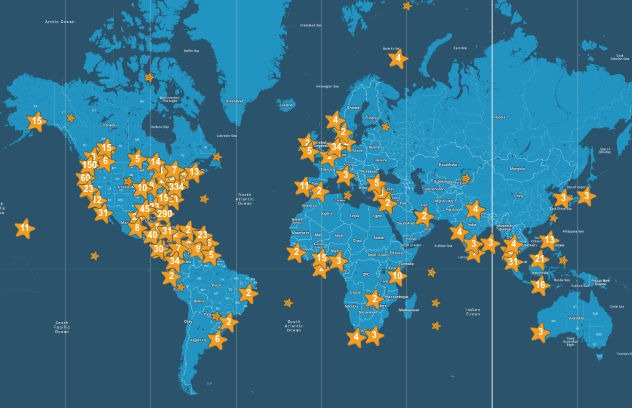From community science to clean water, volunteers are needed to protect our natural environment.
We’re announcing our Earth Month 2019 calendar with hands-on events and volunteer opportunities, happening in Los Angeles County throughout the month of April. Our special Earth Month event series celebrates, protects, and improves our neighborhoods, coastal waters, rivers, creeks, and beaches in Los Angeles County. We expect thousands of participants throughout the month. Individuals, families, schools, businesses, and community organizations are all invited to attend the following events. No special training or experience is required. Pre-registration is strongly encouraged at healthebay.org/earthmonth!
In addition to the Earth Month event series, Heal the Bay is asking Californians to reduce plastic pollution by taking the Plastic Pledge and signing the Plastic Petition in support of State Bill 54 and Assembly Bill 1080, known formally as the California Circular Economy and Plastic Pollution Reduction Acts.
Volunteer Orientation at Heal the Bay’s Aquarium under the Santa Monica Pier
Monday, April 8 @ 6:30pm – 8:30pm
Heal the Bay will host a special Volunteer Orientation during Earth Month to discuss engagement opportunities and policy initiatives. This orientation is ideal for those curious about local volunteer programs, but are unsure about which best fits their needs.
Free Cone Day at Ben & Jerry’s Venice Beach
Tuesday, April 9 @ Noon – 8pm
Heal the Bay is celebrating Free Cone Day with Ben & Jerry’s Venice Beach. FREE cones of ice cream will be given out while supplies last. Meet some of the Heal the Bay team while you visit the Ben & Jerry’s Venice Beach location – and feel free to pass on the love with a small donation to Heal the Bay. Ben & Jerry’s Venice Beach will also start eliminating single-use plastics in their business by switching to wooden spoons and paper straws.
Beach Cleanup north of the Santa Monica Pier
Saturday, April 20, 10am – Noon
Last April, 1,000 volunteers picked up 183 pounds of trash and debris that would have otherwise entered our ocean. We hope to better those totals this year at our big public cleanup north of the Santa Monica Pier. Cleanup participants earn same-day free admission to Heal the Bay’s Aquarium under the Santa Monica Pier. *This event is now SOLD OUT! What does this mean? We’ve run out of supplies, so you need to bring your own gloves and buckets to participate in the cleanup.)
Heal the Bay x Golden Road Art Pop Up Art Gallery at the Rose Room in Venice (21+ event)
Saturday, April 20, Noon – 10pm
Taste Heal the Bay IPA and the brand new Hazy Heal the Bay draught at our 2nd Annual Earth Day Art Gallery Pop Up with Golden Road Brewing. Golden Road Brewing, maker of the Heal the Bay IPA, is hosting the second annual Heal the Bay Pop Up on Saturday, April 20 at The Rose Room in Venice. Golden Road Brewing started brewing Heal the Bay IPA in March 2014, with a percentage of every barrel sold supporting Heal the Bay’s work. Stop by to taste the Heal the Bay IPA beer and the new Hazy draught and see exhibiting local artists.
Earth Day Celebration at Heal the Bay’s Aquarium
Saturday, April 20, 11am – 5pm
Heal the Bay’s award-swimming Aquarium under the Santa Monica Pier has programmed a day filled with fun activities for all ages. Families can experience the Santa Monica Bay and see all the local animals without getting their feet wet. Short film screenings, Earth Day-themed story time, live animal presentations, face painting, and an eco-themed crafts station will round out the celebration in the Aquarium. In addition, visitors who walk to the west end of the Santa Monica Pier will find a wildlife station stocked with binoculars and bird identification guides.
We are also launching a special virtual exhibit on Earth Day 2019 — a 360-degree exploration of marine protected areas off Catalina Island in California. You’ll be able to wear some special goggles and take a virtual dive under the Pacific Ocean. If you’re lucky you might even come face-to-face with a giant sea bass, a rare and endangered denizen of the deep.
TrashBlitz L.A. in San Pedro
Starts on Saturday, April 20, 10am – Noon
The inaugural TrashBlitz L.A. kicks off on April 20 in the Los Angeles River and surrounding watershed communities. Together, volunteers will remove trash and identify the top brands on packaging labels that are polluting the L.A. River and nearby areas. The results of this TrashBlitz will be used to support local and statewide policies and strategies to reduce waste. Heal the Bay is co-hosting the event with 5 Gyres, Friends of the LA River, Surfrider-Long Beach/Los Angeles, Algalita, Space Center, Greenpeace, Multicultural Learning Center, The Bay Foundation, Adventures in Waste, Sierra Club, Loyola Marymount University, Tree People, Team Marine, Los Angeles Waterkeeper, Padres Pioneros, Pacoima Beautiful, Los Angeles Yacht Club, Climate Reality Project, Azul, LA Maritime Institute, Adventures in Waste, Plastic Pollution Coalition, El Nido.
City Nature Challenge all over Los Angeles County
Friday, April 26 – Monday, April 29
The City Nature Challenge is a global effort for people to find and document wildlife in cities. Over 130 cities around the world are competing in the City Nature Challenge, including Los Angeles! For the fourth year in a row, Heal the Bay is rallying everyone in Los Angeles County to get outside, snap photos of any plant, animal, fungi, slime mold, or any other evidence of life (scat, fur, tracks, shells, carcasses!), and share observations using the iNaturalist app. The City Nature Challenge is organized by the Natural History Museum and the California Academy of Sciences. Free iNaturalist training will be provided at Heal the Bay’s Aquarium on April 13, 2pm-4pm.
View Earth Month Calendar
Become a Sustaining Member
Make a lasting gift in support of science-based education, advocacy, and community outreach in honor of Earth Month. Your generous monthly support of $9 starting this Earth Month sustains the health and growth of Heal the Bay, and ensures that L.A.’s water remains healthy, safe, and clean.
Make a $9 Gift for Earth Month
Looking for more ways to get involved? Stay connected with us by signing up for our newsletter and following us on social media at Twitter, Instagram and Facebook.
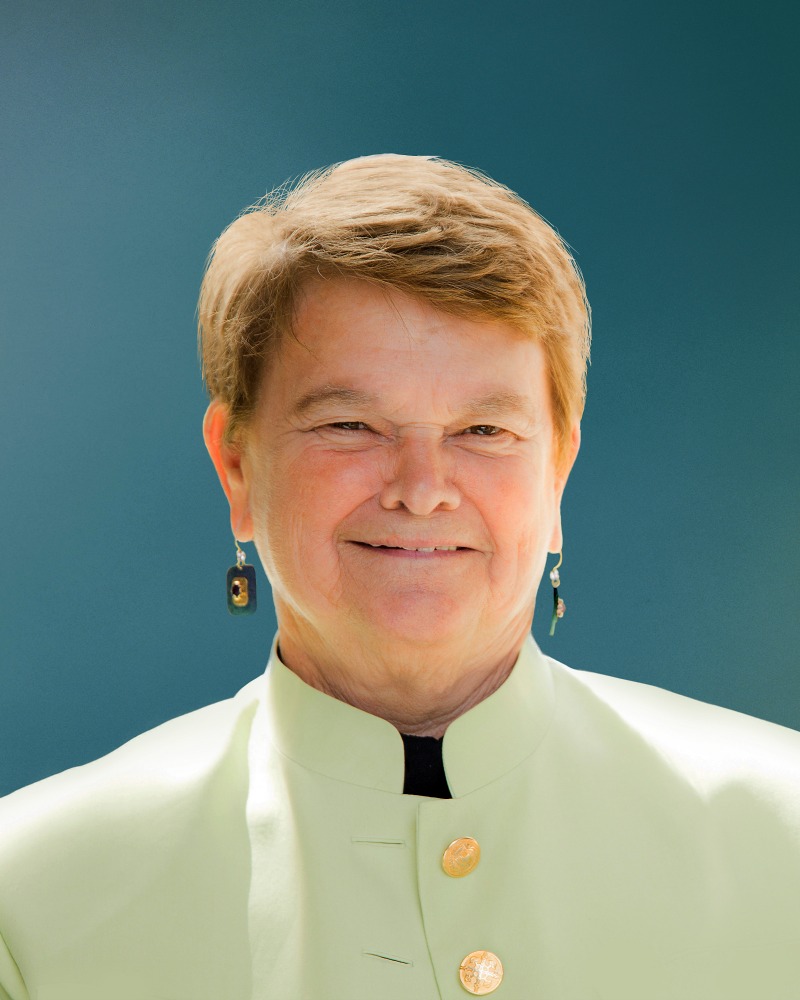
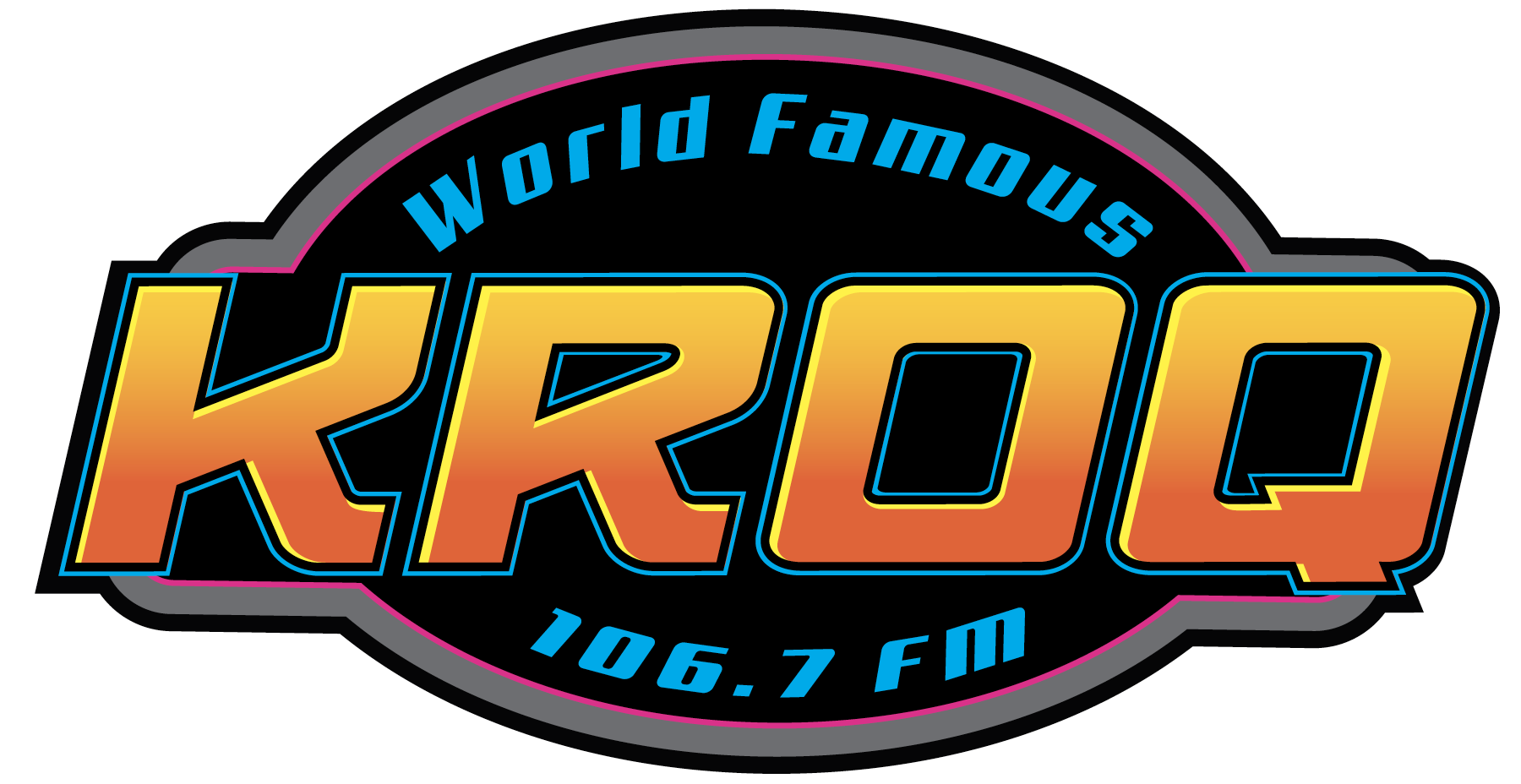



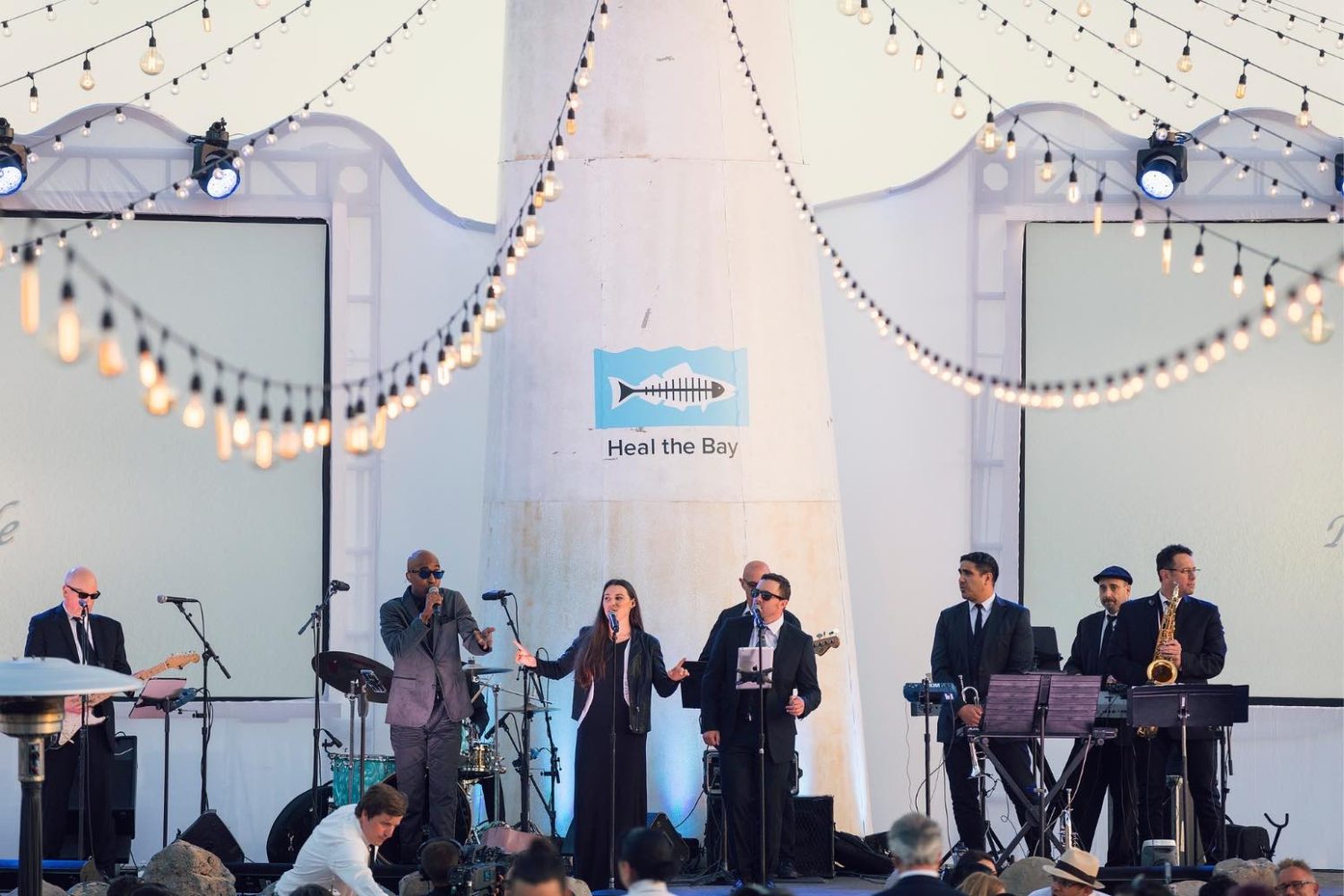

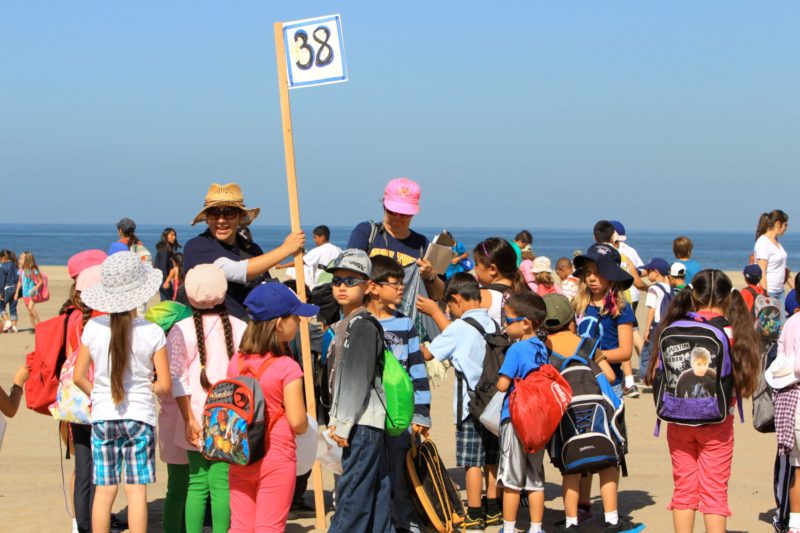
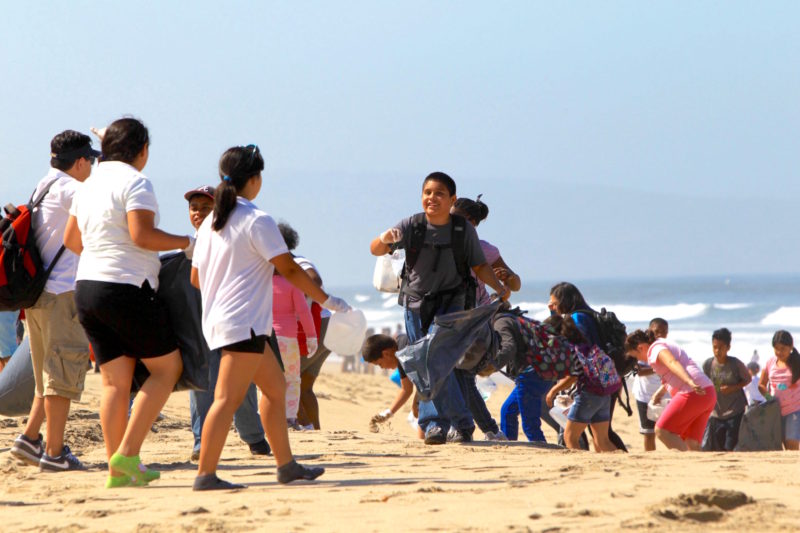
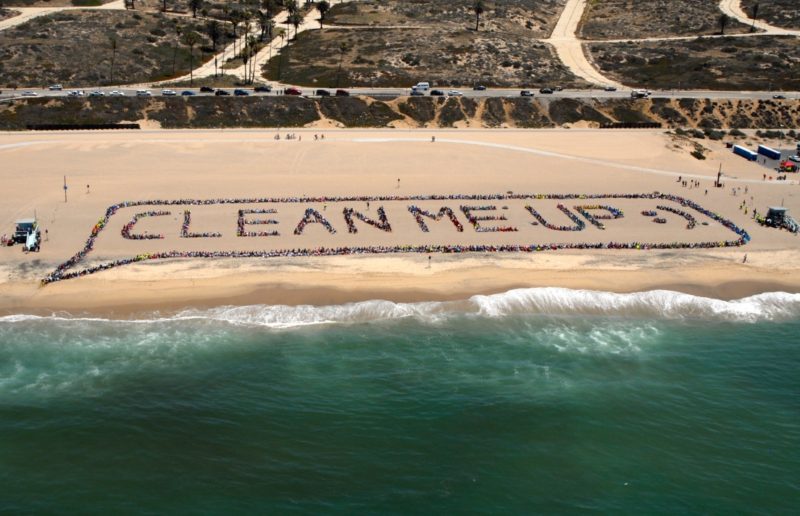 An aerial view of Kids Ocean Day 2014
An aerial view of Kids Ocean Day 2014